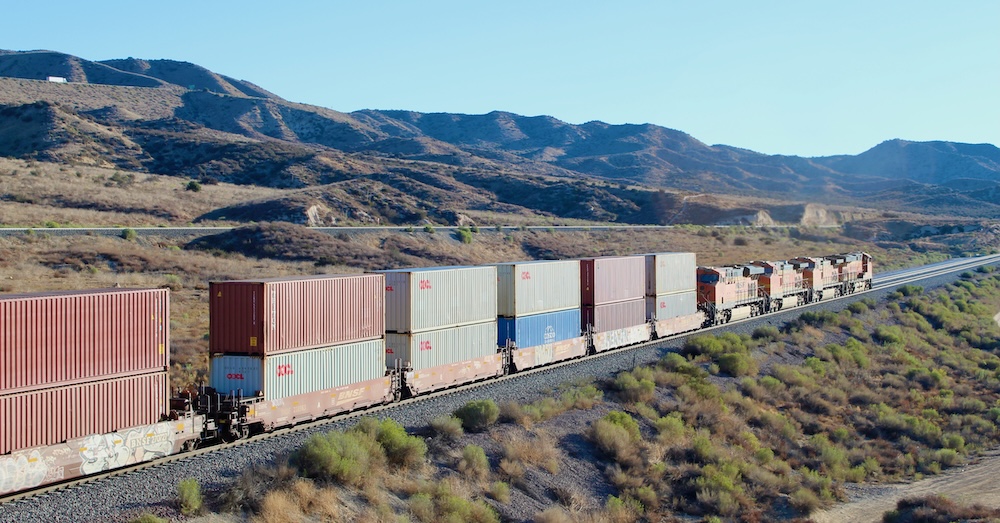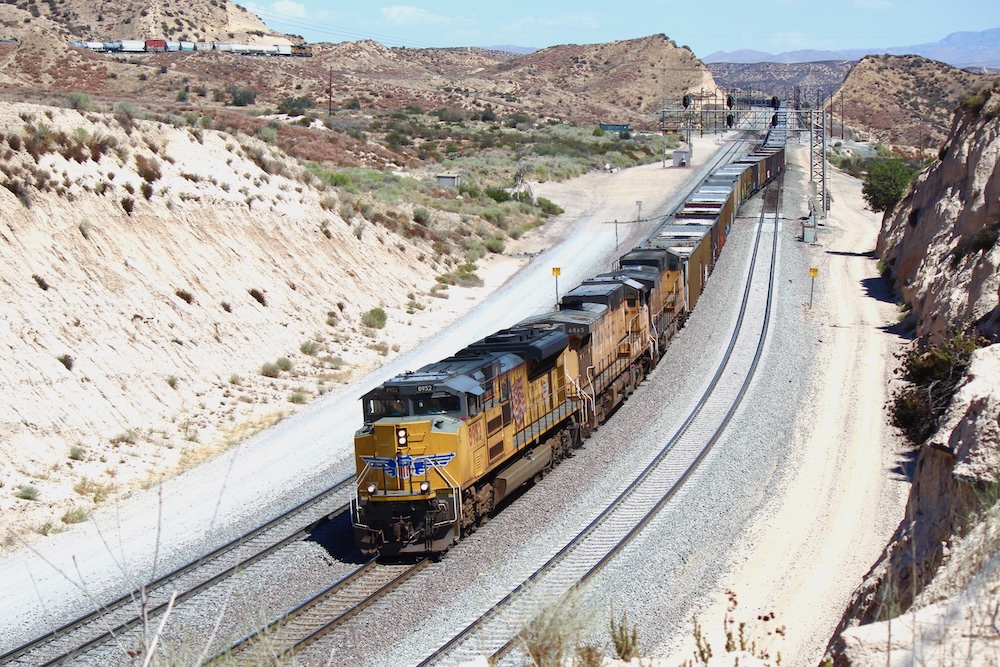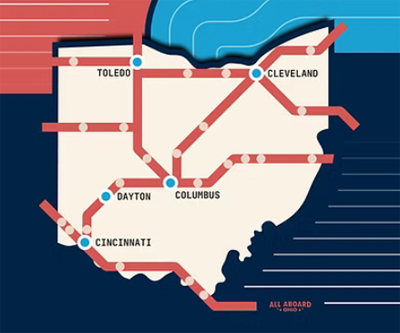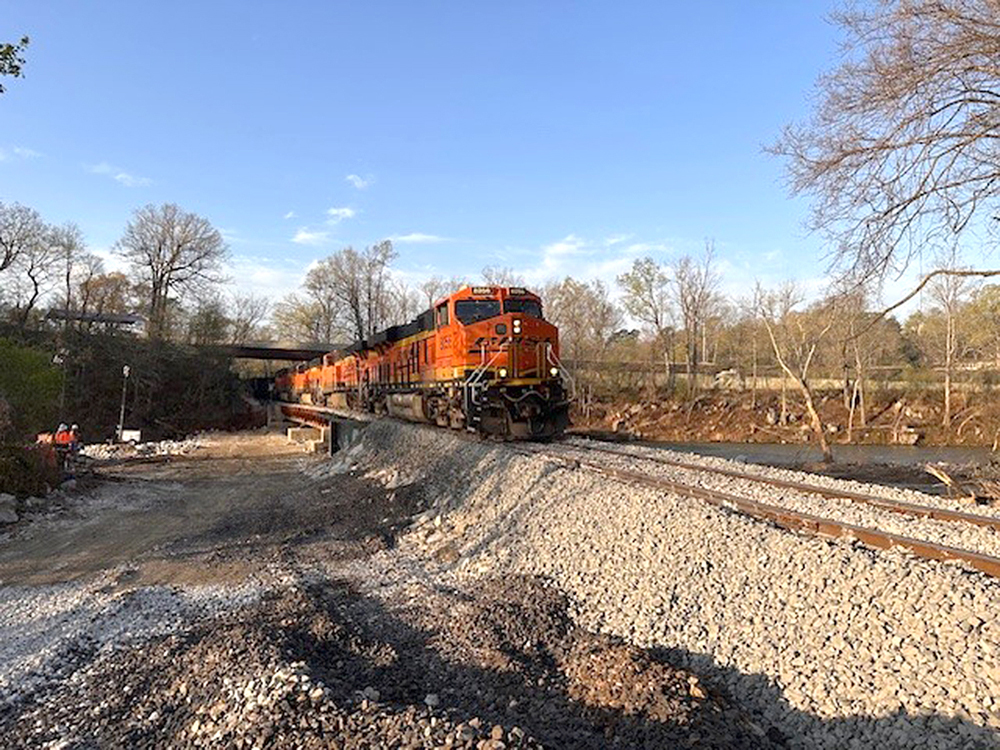In the world of toy trains, the J is among the most-modeled steam locomotives in O gauge: Lionel now has made scale and traditional versions, Weaver a scale version, Williams a scale and soon a traditional version, and MTH a scale, a traditional, and a diminutive “bantam” version.
The model
The postwar Lionel J and its modern-era offspring are truly classics. But when I placed a 1996 Lionel Warhorse J from the CTT staff fleet (the Warhorse J is outwardly identical to the postwar version) next to the all-new J, the old one looked like, well, like a toy. The new J clearly shows how far Lionel has come in the past few years.
The prototype Northern is 109 feet, 21/4 inches long and 16 feet tall. The model measures 109 scale feet (271/4 inches) long and 15 scale feet (33/4 inches) tall. Add another four scale feet (one inch) for the tender-mounted electronic coupler.
Unlike the old J, the new model uses “see-through” spoked driving wheels that I measured at about 60 scale inches (11/16 inches) in diameter. The prototype’s drivers were 70 inches tall.
This model captures all of the major reference points when I compared it with numerous prototype photos from the Kalmbach library. The wonderfully smooth nose features a centered headlight and illuminated number boards. A curved grab iron is just beneath the headlight. Builder’s plates are on both sides of the nose. The streamlined pilot has a hinged door that opens to reveal a scale dummy coupler. Lionel provides a toy train knuckle coupler that can be swapped for the scale coupler.
The handrails along the boiler feature nine stanchions, and the boiler walkway is perforated, for a “see-through” look.
The cab is suitably busy with a crisp backhead, two crew figures, and a flickering firebox glow. There is also a small light for realistic cab illumination.
The spoked pilot wheels caused me to dig further into the photo archives to learn that N&W J-class engines used both solid and spoked wheels. The side rods are attractively subdued in color.
The six-axle tender is huge and well crafted. On top-end locomotives I’ve tested recently, I’ve come to expect the water hatches to open, but on the J they didn’t. RailSounds backup battery installation is easy; just six screws stand between you and the tender frame.
On the test track
The Lionel locomotive uses a single top-end, Pittman-brand can motor. The first and fourth wheelsets are rimmed while the middle sets are blind. Traction tires are on the rear wheelset.
The locomotive’s first few laps around our workshop test track were a little stiff, but as the lubrication worked itself into place, the engine ran smoother at mid- to high speeds and the running gear was fairly quiet.
The low-end speed range wasn’t as smooth as we expected. Operating in conventional mode with the throttle set between 7 and 7.5 volts, the engine would run, then stop, bind a bit, start moving again, bind a bit, and start moving once more. Even after numerous runnings, the locomotive’s low-speed behavior was unchanged.
There also was little evidence of any flywheel coasting. When the locomotive slowed to about 5 to 7 scale mph, it would abruptly stop. It did this in both conventional and command modes. We suspect the problem with our sample locomotive was mechanical rather than electronic, but we were unable to determine the exact cause.
Operating in the conventional mode with the Odyssey cruise control system off, our low-speed test average was 22.29 scale mph. The conventional control high-end average was 74.7 scale mph. In command-mode with the Odyssey electronics engaged, the low-speed average was a far more impressive 3.2 scale mph. In conventional mode at 18 volts with our regular 25-car mixed make and vintage freight train in tow, the Northern averaged 61.1 scale mph.
The drawbar pull for the 14-pound, 2-ounce locomotive is 3 pounds, 3 ounces, equal to roughly 153 modern pieces of rolling stock.
Both the locomotive and tender have a pair of pickup rollers, the locomotive’s for motor power and the tender’s for sound and electronics. Those on the locomotive are 41/2 inches apart, and the tender’s rollers are 71/2 inches apart, plenty of distance to cross switches without electrical interruption.
The locomotive’s number boards on either side of the headlight are illuminated and the headlight and backup light are directional.
The smoke unit delivered a fan-driven torrent of the white stuff, so you’ll want to note that the smoke unit on/off switch and the run/program switch are located on the underside of the cab. The volume control knob and the SignalSounds/RailSounds switch are on the belly of the tender.
The RailSounds system is terrific. The sounds are robust and throaty. The deep, nautical whistle has the authority of the Titanic about to collide with an iceberg! The sound waves caused something inside the tender to vibrate, but not to excess. The tender has two RailSounds speakers. We compared the sound of the new Lionel J with Lionel’s Warhorse J. No contest – the new J’s sounds are a CD compared to vinyl.
Say goodbye to the old J, probably forever. Lionel’s new J-class 4-8-4 is an appealing model that demonstrates the firm’s ability to create a top-of-the-line rendering of a superstar of the steam era.















I agree the new J is a wonderful tribute to the real thing, cause i rode behind the real thing. The sounds and whistle are remarkably accurate. I LOVE IT.
A good looking and running locomotive with an excellent sound system.